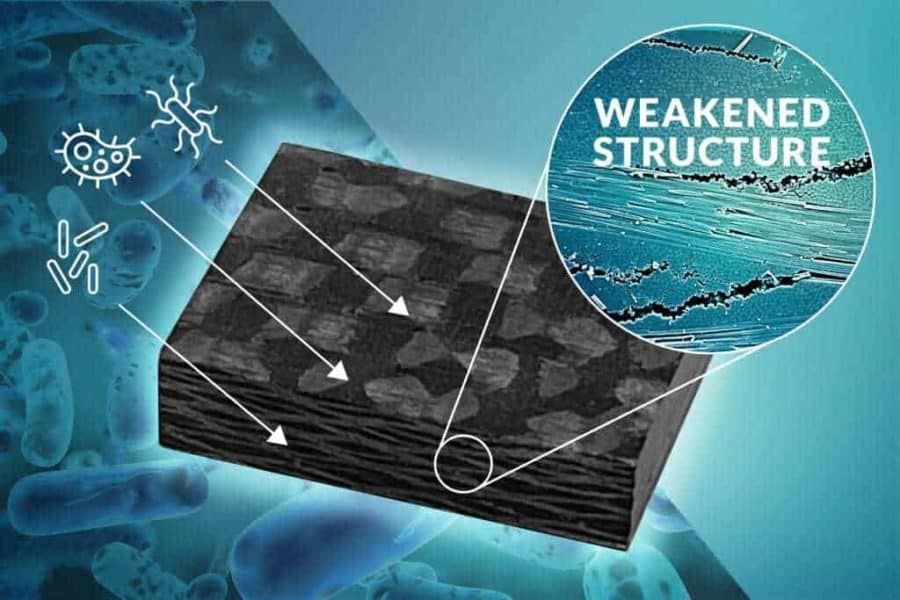Polymer composites are durable, lightweight replacements for wood, metal or other materials and are used widely in everything from pipelines and utility poles to airplanes and cars.
Research at the University of Wisconsin–Madison is shedding new light on how common bacteria can degrade those materials.
“A lot of studies have focused on how these polymer materials would respond to environmental conditions like temperature, moisture or ultraviolet light,” says Pavana Prabhakar, a UW–Madison professor of civil and environmental engineering. “They’ve rarely been studied in the context of microbial interactions.”
Prabhakar and her collaborators identified four bacterial groups that have detrimental interactions with the acrylate, esters and bisphenol commonly found in polymer composites. The group — including UW–Madison bacteriology professor Karthik Anantharaman and Adam Breister and Muhammad Imam, a research technician and a post-doctoral researcher in the Anantharaman and Prabhakar labs, respectively — published their findings recently in the journal Communications Materials.
Research on microorganisms interacting with polymer composites has focused on individual types of cultivated microbes that aren’t necessarily common in natural environments, according to Prabhakar. Instead, she and Anantharaman studied microbes found more frequently in nature.
“We wanted to look at the whole diverse community of microbes that exists in the environment to see how they impact our polymer composites,” Prabhakar says.
The way bacteria affect these materials can vary, says Anantharaman. Some bacteria feed directly on the materials to consume them as carbon compounds. Other types of bacteria produce hydrogen and hydrogen sulfide gases within the composites, which can weaken structural integrity.
“What we’ve observed is that no organism degrades all three materials — the acrylate, esters and bisphenol — at the same time,” Anantharaman says. “Each affects one type of material, but by interacting, they can degrade the whole composite much faster.”
Prabhakar and Anantharaman used metagenomics, which recovers a broad range of genetic material directly from environmental samples, to probe microorganisms that live on the surfaces of polymer composites in natural settings. Prabhakar says it’s the first time the technique has been used in such a fashion and it provided a tremendous advantage for studying entire microbial communities at one time.
As a result, the research lays the groundwork for future studies. For example, if researchers want to study the microbiome’s impact on polymer composites underwater or in drainage pipes, they can use the duo’s platform and methods to better understand interactions in those contexts.
Prabhakar, whose work is funded by the Office of Naval Research, says the study may also help structural engineers to understand environmental stressors of polymer composite materials and how to design them to resist microbial degradation. She wants to conduct further research to determine how the microbiome can, for example, create micro-cracks.
“Right now, we’re looking at the overall degradation of the material,” says Prabhakar, the Charles G. Salmon Fellow of Structural Engineering. “But can they cause localized stressors in addition to other stressors that exist in the environment? That’s something we will continue to look at.”
This research was funded through a grant from the Department of Defense (N00014-19-1-2206).


